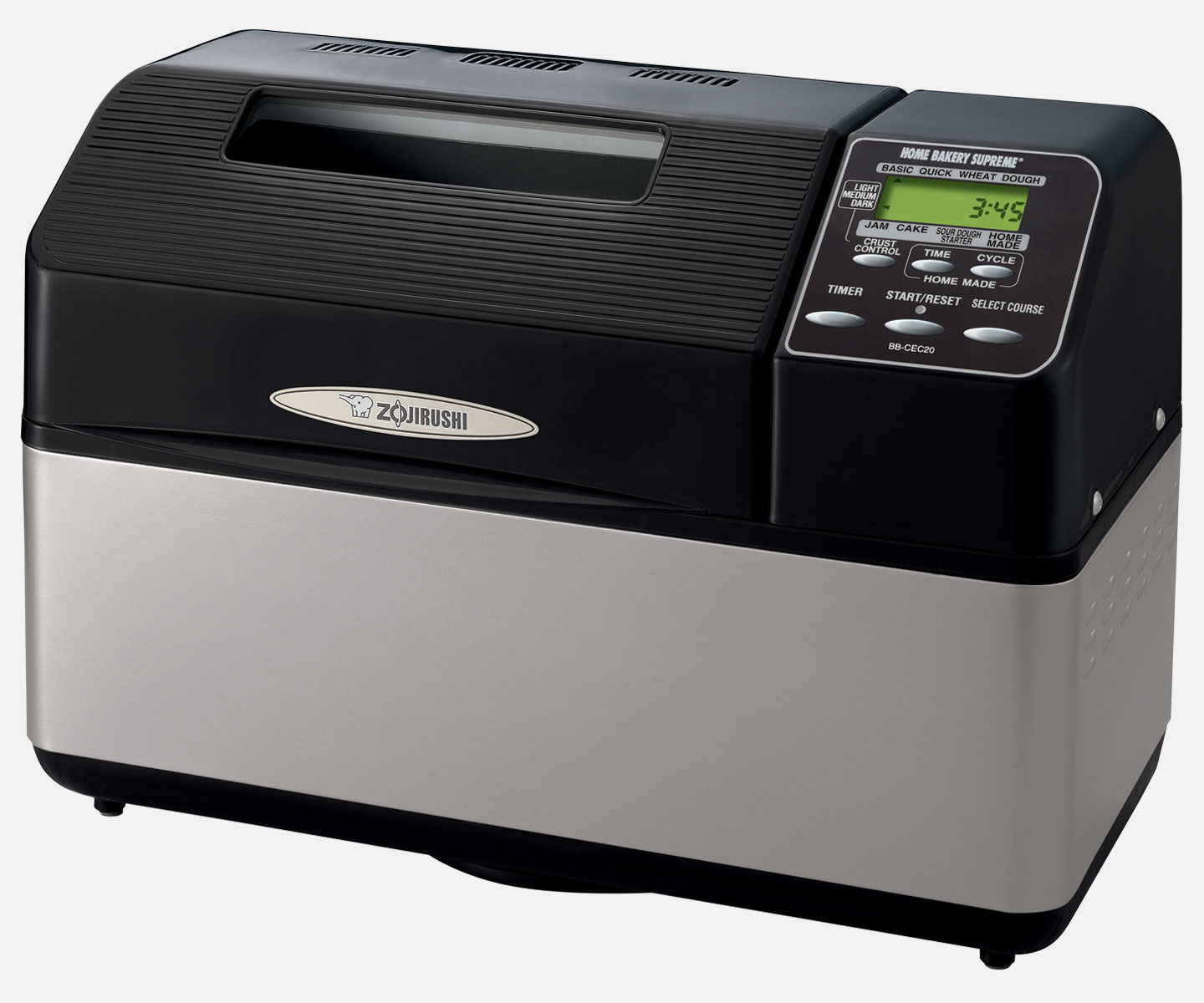Share your photos by tagging us and using the hashtag #BigGreenEgg.
Want to see how the EGG is made? Click to Watch
Zojirushi vs Yeti vs Generic Tumbers

Here are the contestants:

I poured 202 degree water (from the same pot full) into all three tumblers, waited five minutes, and checked the temps. The Zojirushi had dropped to 194 degrees, the Yeti to 191 degrees, and the generic to 188 degrees in those first five minutes. First conclusion was that pre-warming (or cooling) the tumblers isn't such a bad idea. Geez, you just spent $30 on an efficient tumbler and lost ~10 degrees on fill-up.
Recorded temps through out the day to obtain this graph:

It's obvious that the Yeti is much better than the generic tumblers that most of us have been using. The Zojirushi really stood out as a high performer. The lack of an insulated lid is probably the primary contributor towards the Yeti coming in second.
I wondered what the data meant relative to real-world usage. My coffee pot turns out 183 degree coffee and the hot plate (on high setting) will warm it to 193 degrees after an hour or so. Sounds like 180 degrees is a reasonable high temp figure for a cup of coffee ... 140 degrees, although hot, seems to be the temp when I start towards the microwave.
So the curves were manipulated to produce this graph where the tumbler data starts out at 180 degrees and the time to cool to 140 degrees is easy to see:

If you start out with a tumbler of 180 degree coffee and don't drink it, then the generic tumbler will keep it drinkable for 1.2 hrs, the Yeti for 2.9 hrs, and the Jojirushi for 11.5 hrs. The Zojirushi might look like a yuppie toy, but it's really a good product.
The time frame for the Zojirushi matches what I've experienced using it ... fill it, leave it in the Jeep, and it's still good to drink on the way home after work. Its high efficiency is probably its greatest deficit for average use. If you start with too-hot-to-drink coffee, it simply doesn't cool down in a reasonable length of time. If you want to drink it now, then you've got to put drinkable coffee in it to start with. It's most forgiving when using it for cold drinks ... just not during summers in the South where a gallon an hour seems about the correct liquid intake.
The Yeti looks like it's well worth double the cost of the generic tumblers. An insulated closable lid would improve it's heat transfer efficiency, but I really like the convenience of the lid as designed. The sliding pieces on the generic caps get gummed up and are hard to keep clean. The Yeti is easy to clean ... and, easy to see where to clean since it's clear. Although the Zojirushi lid works well and can be cleaned completely, it is composed of two pliable seals and two hard plastic parts.
Looking forward to taking a road trip with the Yeti ...
Washington, IL > Queen Creek, AZ ... Two large eggs and an adopted Mini Max
Comments
-
good data. I wonder if a cold test would give the same results. My guess is yes. Thanks for sharingLBGE& SBGE———————————————•———————– Pennsylvania / poconos
-
We have a Zojirushi container that we got from REI 5-6 years ago and the thing works like a champ. Mostly used for coffee duty. I'll make about 30oz of french pressed aroud 7am and it will still be nice and warm/hot at 7pm.
-
Very good test data. I have yet to purchase a Yeti and continue to use my old Thermos cup for cold drinks in the car. Ice lasts for a couple of days even in the hot weather so for the time being it is good enough. If it ever starts going for less than a day I will replace it with what ever is the best then. I am watching @SGH cooler test as that is closer to my needs right now.A poor widows son.
See der Rabbits, Iowa -
Always love data/numbers. Thanks for the testing and documentation.
I'm so old I recall when Zojirushi was only a bread-making machine.Louisville; Rolling smoke in the neighbourhood. Life is too short for light/lite beer! Seems I'm livin in a transitional period. CHEETO (aka Agent Orange) makes Nixon look like a saint. -
Thank you, Tom for your thorough analysis. Even I am now all YETIed up and not in the market for another I am curious if you recall the price of your Zojirushi.Re-gasketing the USA one yard at a time
-
A cold test would be interesting. The lid would be less of a detriment in a cold test.grege345 said:good data. I wonder if a cold test would give the same results. My guess is yes. Thanks for sharingI would rather light a candle than curse your darkness.
-
I agree on the "love data" statements. Also agree on the "thank you for doing this sentiment. Great contribution. Thanks.
XXL BGE, Karebecue, Klose BYC, Chargiller Akorn Kamado, Weber Smokey Mountain, Grand Turbo gasser, Weber Smoky Joe, and the wheelbarrow that my grandfather used to cook steaks from his cattle
San Antonio, TX
-
@grege345 ... since the tumbler doesn't know if heat energy is exiting or entering, the curve data for cooling will be very similar. Although, as @Ozzie_Isaac mentioned, a cold test might show a slight improvement for the Yetti because the way heat would flow (or not flow) through the cap.
Washington, IL > Queen Creek, AZ ... Two large eggs and an adopted Mini Max
-
@SLOandSteady ... yep, your use of the Zojirushi is where it really shines. Make a special drink at home and enjoy after work. But, since I'm retired, well, gee ... it doesn't get used as much as the Yeti will.
Washington, IL > Queen Creek, AZ ... Two large eggs and an adopted Mini Max
-
@bettysnephew ... following @SGH's lead is a sure path to the poor house.
@lousubcap ... that's funny about the bread maker, since they make some great rice makers in Japan - high end models that they don't export. Next time you're getting a cup of coffee from the containers at a hotel, look at the maker ... it's probably a Zojirushi product.
Washington, IL > Queen Creek, AZ ... Two large eggs and an adopted Mini Max
-
@RRP ... they're about the same as the 20oz tumbler ... ~$30. Here's the model number ... Zojirushi SM-KHE48AG.
Washington, IL > Queen Creek, AZ ... Two large eggs and an adopted Mini Max
-
Everything works great when it's new. Do the tests in 6 months and compare. Btw, my Yeti 30 went bad @ about 7 months. Seems the seal that holds the vacuum (why are there two U's in Vacuum?) seal leaked. Yeti warrantied the 30 prontoI've slow smoked and eaten so much pork, I'm legally recognized as being part swine - Chatsworth Ca.
-
true^^^SoCalTim said:Everything works great when it's new. -
All of this stuff (coolers, smokers etc, etc...) sure does get expensive quick. Hey, we are only going to live once so we might as well enjoy it while we can my friend. That's a cool test you ran. Thanks for sharing your findings.Jeepster47 said:Location- Just "this side" of Biloxi, Ms.
Status- Standing by.
The greatest barrier against all wisdom, the stronghold against knowledge itself, is the single thought, in ones mind, that they already have it all figured out. -
@Jeepster47 , wow thanks for testing and posting your result graphs!
Agree on the requests to do a "cold" test.
re: Yeti vs Zoji, beyond the results
I think the differences in the lid create different use cases for each.
I keep the Yeti 30oz next with me all day to drink from while at home, whereas I would not choose to do that with the Zojirushi because of the extra lid manipulation needed. Plus, I already have a "home for lost gaskets" (seals) in a small jar. (When I wash something with a gasket, I remove the gasket before putting it in the dishwasher.)
Before the Yeti, my favorite to take with me on errand trips was the Contigo model, specifically because its the only model that does NOT have a gasket to lose. I keep the Contigo in my freezer. (fyi - YETI's are not supposed to be kept in the freezer from something I read here.)
In a car, the Yeti lid is spill resistant but not spill proof like the Zoji is. It does have a gasket, but it can't be removed / lost.
However, before I purchased the Yeti, I was in the market for something exactly like the Zoji, specifically for the "in the car" scenario. But unless I turn the Yeti sideways, that lid + a bendy straw is good enough to prevent most tilt spills in the car. -
When I pour a cup of coffee, I DRINK a cup of coffee. It doesn't need to stay hot all that long. Why one would want to hold temp for 12 hours is beyond me.
I do like my Zo though.

BTW, if you can't drink your coffee when first brewed, you're brewing it too hot.I hate it when I go to the kitchen for food and all I find are ingredients!
MichaelCentral Connecticut -
No tumbler but my zojirushi Japanese rice/porridge cooker is top notch. Love their Japan made stuff.Seattle, WA
-
SkinnyV said:No tumbler but my zojirushi Japanese rice/porridge cooker is top notch. Love their Japan made stuff.
Ditto! And who doesnt love a rendition of Twinkle Twinkle Little Star when your rice is done (As my Zoji plays lol)
-
stv8r said:SkinnyV said:No tumbler but my zojirushi Japanese rice/porridge cooker is top notch. Love their Japan made stuff.
Ditto! And who doesnt love a rendition of Twinkle Twinkle Little Star when your rice is done (As my Zoji plays lol)
@stv8r Ok - confession time.
I've had mine for just over 10 years. I use it at least once per week, often more. That means I've heard that cute little jingle over 600 times - not until you posted did I realize it was Twinkle Twinkle Little star.
Phoenix -
Nice test, I appreciate it!
I would like to see the test done with no lids.
______________________________________________I love lamp.. -
We had a Zojirushi water boiler pot that dispensed electrically. Used it for about four years and it was very convenient as the wife is Asian and brews a lot of tea. We set it up at the higher temperature (205 if I recall) and it also worked good for my pour over coffee. She had to wait a bit for the water to cool in the pot before pouring over leaves. We finally tossed it because the interior coating started to flake off, but since it was on 24/7 over that time period were not disappointed. We did choose to go to a glass pot boiler this time though. She also has the Z rice cooker and it is a great machine.A poor widows son.
See der Rabbits, Iowa -
i only have the 30 ounce yeti, keeps tea hot from 4am to about 10am on the boat, after drinking 30 ounces of tea, ive had enough tea
 actually looking forward to see how it does for soups and chilis this fall, my old thermos isnt big enough and its hard to fill, clean, and has too many moving parts and the opening is too small. yeti seems to have fixed those problems with the big tumbler
actually looking forward to see how it does for soups and chilis this fall, my old thermos isnt big enough and its hard to fill, clean, and has too many moving parts and the opening is too small. yeti seems to have fixed those problems with the big tumbler
fukahwee maineyou can lead a fish to water but you can not make him drink it -
-
I don't know if I agree with this. Or maybe I do.Eggcelsior said:.
______________________________________________I love lamp.. -
@nolaegghead ... the egg's a man of few words isn't he?
You asked to see the test done with no lids. What's your guess as to the results?
Playing around with my Flameboss 200. Not sure they intended it for that use, but it makes an interesting data acquisition unit. With one food probe, I'm restricted to a single channel. Should be done testing late tonight.
Washington, IL > Queen Creek, AZ ... Two large eggs and an adopted Mini Max
-
@Jeepster47 - The vacuum flasks should be almost perfectly insulated on the sides. if one has a vacuum failure, it will loose heat much faster (insulation goes from like R-100 to R-1) The more surface area to volume ratio will decide the loser, all else equal.
A better test of insulation would be to submerge them in ice water to pre-cool, then pour 32F water in them and see how long they take to get up to some temp, like 60F. Heat rises so you have a lot of loss on the top. Hence the winner having the best top. But cold air sinks and the winner will be decided by the insulation quality of the sides and bottom.
______________________________________________I love lamp..
Categories
- All Categories
- 184K EggHead Forum
- 16.1K Forum List
- 461 EGGtoberfest
- 1.9K Forum Feedback
- 10.5K Off Topic
- 2.4K EGG Table Forum
- 1 Rules & Disclaimer
- 9.2K Cookbook
- 15 Valentines Day
- 118 Holiday Recipes
- 348 Appetizers
- 521 Baking
- 2.5K Beef
- 90 Desserts
- 167 Lamb
- 2.4K Pork
- 1.5K Poultry
- 33 Salads and Dressings
- 322 Sauces, Rubs, Marinades
- 548 Seafood
- 175 Sides
- 122 Soups, Stews, Chilis
- 40 Vegetarian
- 103 Vegetables
- 315 Health
- 293 Weight Loss Forum

















